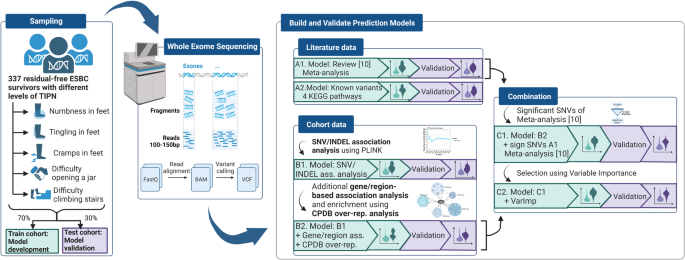2024-07-09 リンショーピング大学
<関連情報>
- https://liu.se/en/news-item/nerve-damage-from-cancer-treatment-can-be-predicted
- https://www.nature.com/articles/s41698-024-00594-x
全ゲノムシークエンシングを用いた乳がん生存者におけるタキサン誘発末梢神経障害の持続性予測モデル Prediction models of persistent taxane-induced peripheral neuropathy among breast cancer survivors using whole-exome sequencing
Kristina Engvall,Hanna Uvdal,Niclas Björn,Elisabeth Åvall-Lundqvist & Henrik Gréen
npj Precision Oncology Published:16 May 2024
DOI:https://doi.org/10.1038/s41698-024-00594-x

Abstract
Persistent taxane-induced peripheral neuropathy (TIPN) is highly prevalent among early-stage breast cancer survivors (ESBCS) and has detrimental effect on quality of life. We leveraged logistic regression models to develop and validate polygenic prediction models to estimate the risk of persistent PN symptoms in a training cohort and validation cohort taking clinical risk factors into account. Based on 337 whole-exome sequenced ESBCS two of five prediction models for individual PN symptoms obtained AUC results above 60% when validated. Using the model for numbness in feet (35 SNVs) in the test cohort, 73% survivors were correctly predicted. For tingling in feet (55 SNVs) 70% were correctly predicted. Both models included SNVs from the ADAMTS20, APT6V0A2, CCDC88C, CYP2C8, EPHA5, NR1H3, PSKH2/APTV0D2, and SCN10A genes. For cramps in feet, difficulty climbing stairs and difficulty opening a jar the validation was unsuccessful. Polygenic prediction models including clinical risk factors can estimate the risk of persistent taxane-induced numbness in feet and tingling in feet in ESBCS.


